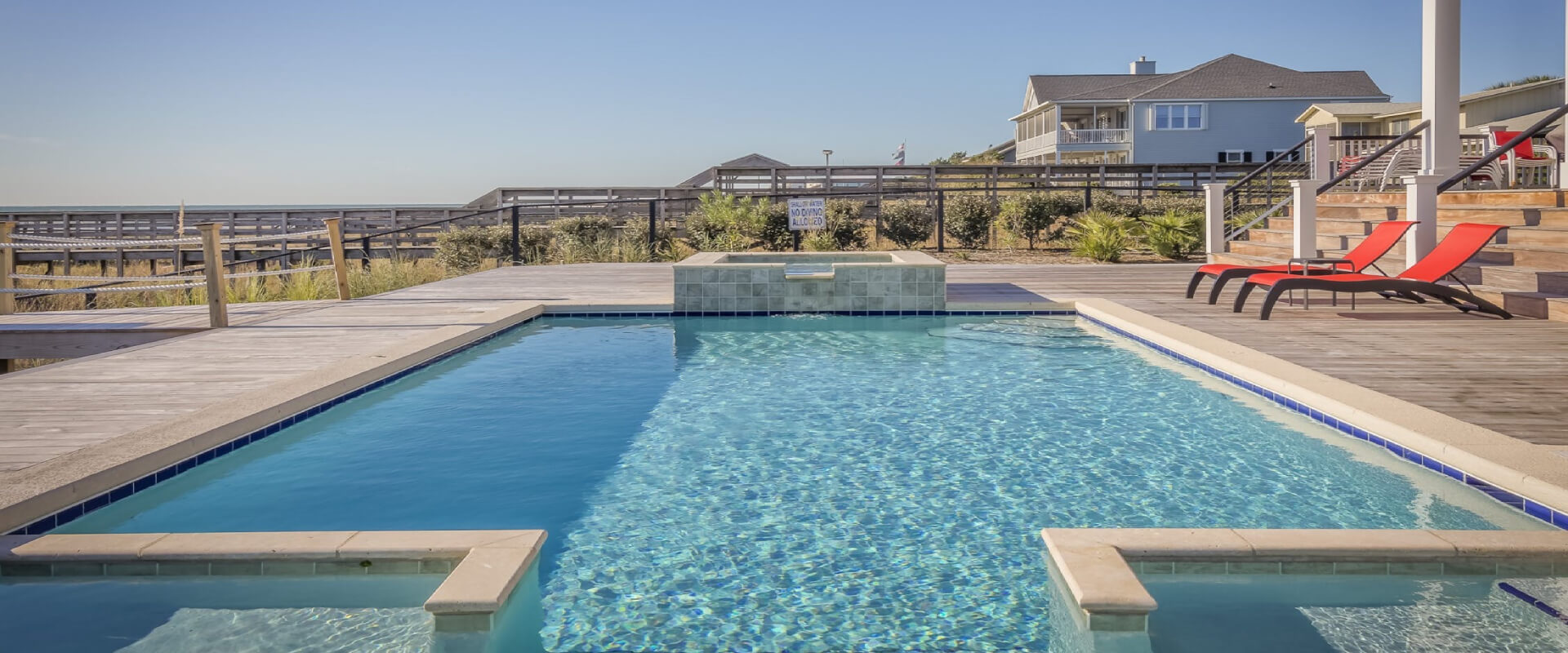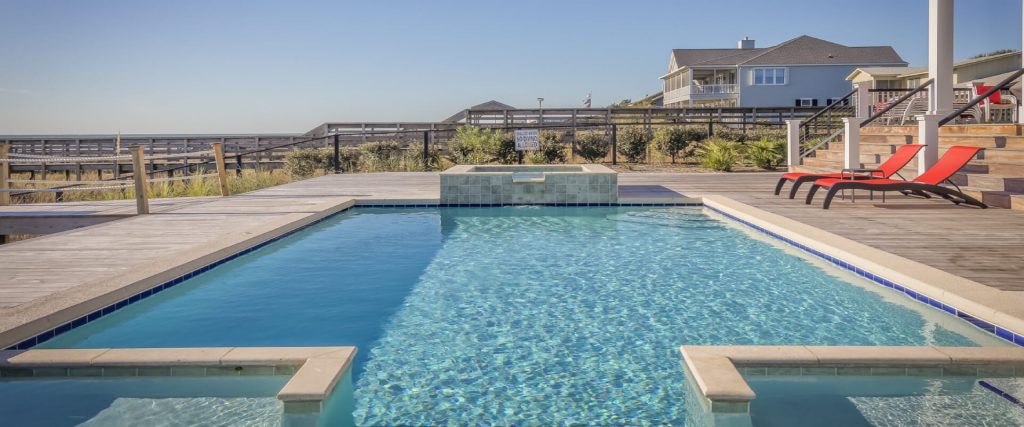How Much Salt Should You Add To Your Pool?
As summer pool days approach, it’s important to make sure that your water is clean and ready to dive into! For those with a salt pool, understanding the correct salt to water ratio is a skill that must be learned and mastered for that clean, clear pool water you want to maintain.
In today’s article we will discuss what qualifies as the optimal level of salt, as well as what the consequences of poorly balanced water can be.
What’s the best salt level for a pool?
Various factors can impact the salinity of your swimming pool. No matter how hard you work at perfecting your pool maintenance schedule, there is always going to be a fluctuation in the level of salt in your pool.
Ideally, around 3,200 PPM (parts per million) is best, but most pools can safely fluctuate between 2,700 and 3,700 PPM. This ratio is determined when the homeowner calculates pool volume with the overall amount of non iodized salt.
What happens if your pool’s salt level is too high or too low?
The balancing act between too much salt and not enough salt is an important one. Maintaining a saltwater pool with far too much salinity can result in the damage of equipment as well as impact the health and safety of those choosing to swim in the water. Not to mention how it’ll taste!
Alternatively, pools with salt ratios less than the recommended amount will risk algae and bacteria growth. Neither option is desirable.
How to test your pool’s current salt level
Unfortunately, salt water pools are no different than chlorine pools when it comes to the need to regularly test water levels. Even if the pool was perfectly balanced to begin with, nothing but a matter of days will be all that’s needed to result in a change of salinity. Rain, evaporation, filtration, and more all affect the salt level over time.
Thankfully, there are a few different ways you can test the levels of your pool.
Digital salinity tester
Similar to a meat thermometer, a digital salinity tester can provide a quick and accurate synopsis of the contents of your pool’s water. These devices are also helpful for spas and aquariums as well.
Salt test strips
A little less costly on a short sided perspective are test strips. These paper strips are a simple way of verifying your water’s salinity. A simple color grade system is used to visually convey how much salt is in your water.
Liquid reagent kit
For a more hands on approach, there is the option to use a liquid reagent kit. This kit allows you to monitor the salt levels of your water using a color based system similar to the test strips. When a few drops of the chemical are added to the salt water, it produces a color indicating the presence of specific chemicals or contaminants.
Calculate how much salt to add to your pool
For the most part, you’re almost never going to start with absolutely no salt in your pool water. The process of calculating how many parts per million you will need to balance out your pool is going to be a regularly occurring event.
The formula for calculating how much salt to add involves determining the difference between your current salt level and the target level, and then multiplying that difference by your pool’s volume in gallons. Divide this result by 1,000 to get the amount of salt needed in pounds.
How to add salt to your pool
Although slightly intimidating at first, adding salt to your pool is actually a simple and straightforward process.
Always use pool-grade salt
Put down the table salt and make sure you’re using pool-grade products to balance your pool. Although both pool salt and table salt are pretty much the same thing, purchasing a pool-grade product ensures there’s no extra additives to imbalance your water chemistry.
Turn off your salt chlorine generator
To avoid potential damage to your pool equipment, ensure that your salt generator is turned off. This will provide the best possible results while also ensuring your salt water system is protected.
Add the proper amount of salt
Try to avoid adding your salt to just one part of the pool. Try to distribute the proper amount of salt evenly throughout the pool with a focus on heavy circulation points.
Turn your salt chlorinator back on
Now that the salt has been distributed it is safe to switch on the power to your pool systems. Let the water circulate for at least the next 24 hours, testing your water periodically to ensure that the perfect salt levels and total alkalinity have been achieved.
For saltwater pool maintenance help, contact GPS Pools!
Owning a pool and keeping up with pool maintenance can seem overwhelming for both new and experienced pool owners alike. That’s why, for years, our community has trusted us here at GPS pools for both pool maintenance and pool supplies in the greater Tampa Bay area.
Let us guide you and bring your pool dreams to a relaxing reality. Visit one of our local stores, or check out our website for a list of products and services.


